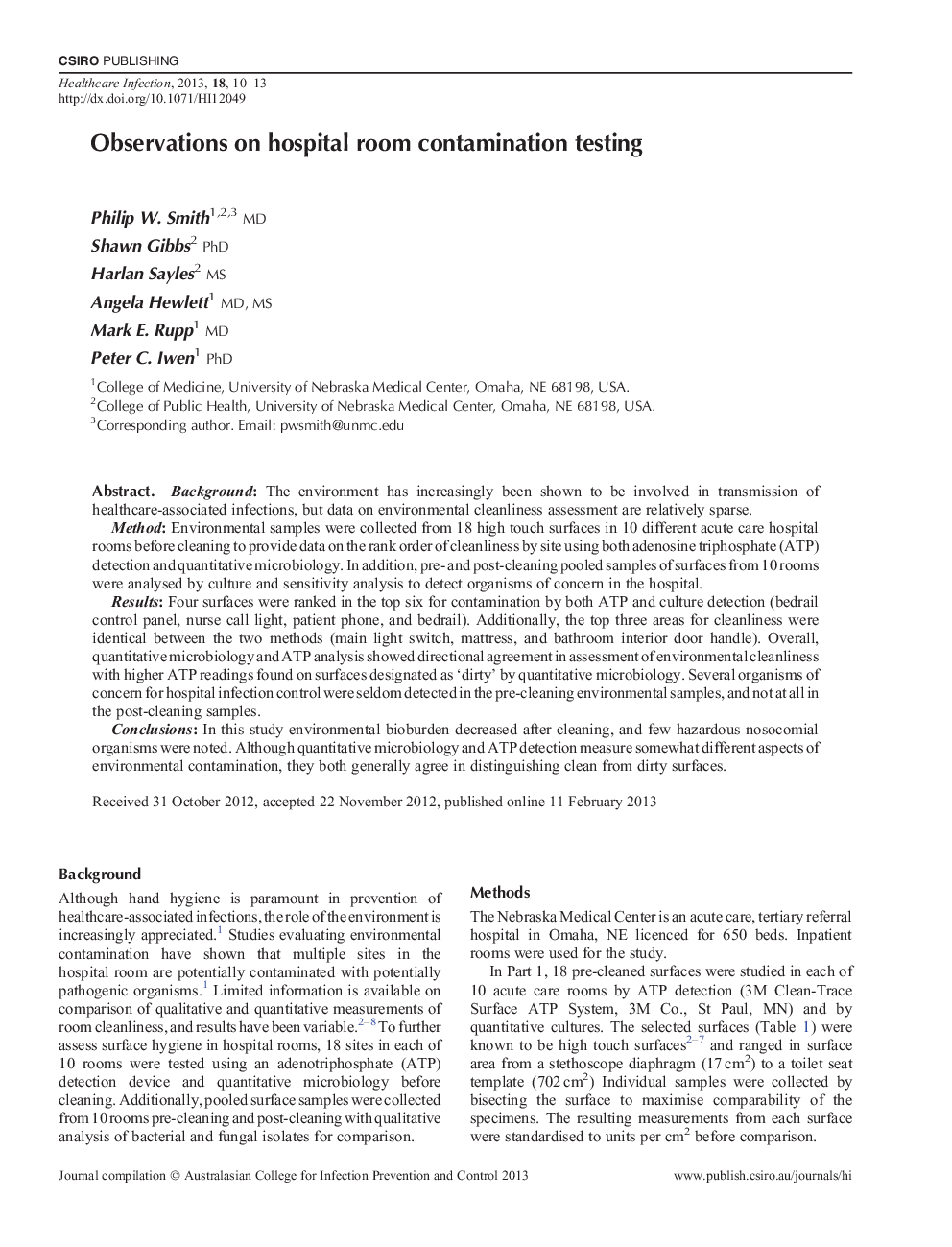| Article ID | Journal | Published Year | Pages | File Type |
|---|---|---|---|---|
| 2679699 | Healthcare infection | 2013 | 4 Pages |
BackgroundThe environment has increasingly been shown to be involved in transmission of healthcare-associated infections, but data on environmental cleanliness assessment are relatively sparse.MethodEnvironmental samples were collected from 18 high touch surfaces in 10 different acute care hospital rooms before cleaning to provide data on the rank order of cleanliness by site using both adenosine triphosphate (ATP) detection and quantitative microbiology. In addition, pre-and post-cleaning pooled samples of surfaces from 10 rooms were analysed by culture and sensitivity analysis to detect organisms of concern in the hospital.ResultsFour surfaces were ranked in the top six for contamination by both ATP and culture detection (bedrail control panel, nurse call light, patient phone, and bedrail). Additionally, the top three areas for cleanliness were identical between the two methods (main light switch, mattress, and bathroom interior door handle). Overall, quantitative microbiology andATPanalysisshowed directional agreement in assessment of environmental cleanliness with higher ATP readings found on surfaces designated as ‘dirty’ by quantitative microbiology. Several organisms of concern for hospital infection control were seldomdetected in the pre-cleaning environmental samples, and not at all in the post-cleaning samples.ConclusionsIn this study environmental bioburden decreased after cleaning, and few hazardous nosocomial organisms were noted. Although quantitative microbiology and ATP detection measure somewhat different aspects of environmental contamination, they both generally agree in distinguishing clean from dirty surfaces.
